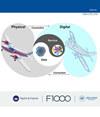物联网对象模型
引用次数: 0
摘要
背景:随着通信技术和先进传感器的进步,物联网(IoT)在建筑、社区、工厂、公园等领域的应用需求巨大。接入物联网设备,为场景管理和监控提供便利,智能改善生产和生活。然而,由于物联网设备缺乏统一的模型,数据经常跳过物联网平台,直接传输到应用程序。这导致每个制造商都需要生产自己的设备并开发自己的定制软件,这大大增加了开发周期。另一方面,不同系统之间的信息传递困难,限制了跨系统控制。此外,数字孪生依赖于大量异构数据,如果没有统一的设备描述模型,提供足够的数据是不现实的。方法:首先,我们阐述了创建物联网对象模型(IoT-OM)的动机、设计目标和设计原则。然后,我们提出了一个统一的描述来定义物联网设备。提出的概念已被几家公司所接受,我们分析了一个采用该模型的平台。为了证明该模型的有效性,我们介绍了基于该平台的两个项目。一个项目是智能消防系统,另一个项目是智能空气质量监测系统。结果:我们测量了五家公司在开发物联网设备及其应用时所花费的时间,包括未使用所提出模型的开发周期以及在中国移动OneNET平台上使用该模型的开发周期。结果表明,该模型可以显著缩短开发周期。结论:本文提出了一种物联网设备模型,有助于统一不同厂商之间的异构数据,缩短开发人员的开发周期。本文章由计算机程序翻译,如有差异,请以英文原文为准。
Internet-of-Things object model
Background: With the advancement of communication technology and advanced sensors, there are massive demands for Internet-of-Things (IoT) applications in buildings, communities, factories, parks, etc. Accessing IoT devices provides convenience for scene management and monitoring, ameliorating production and life intelligently. However, due to the lack of a unified model for IoT devices, data is often skipped over IoT platforms and transmitted to applications directly. This leads to the fact that each manufacturer needs to produce its devices and develop its customized software, which hugely increases the development cycle. On the other hand, it is difficult to convey information between different systems, limiting cross- system control. Moreover, digital twin relies on large amounts of heterogeneous data, and it is impracticable to provide enough data without a unified model for device description. Methods: First, we illustrate the motivation, design goals, and design principles for creating the Internet-of-Things Object Model (IoT-OM). Then we propose a unified description to define IoT devices. The proposed concept has been accepted by several companies, and we analyse one platform that adopts the model. To demonstrate the effectiveness of the model, we introduce two projects based on the platform. One project is an intelligent fire protection system, and another project is an intelligent air quality monitoring system. Results: We measured the time taken by five companies when developing IoT devices and their applications, including the development cycle duration without utilizing the proposed model and the duration using the model at China Mobile’s OneNET platform. The results prove that the proposed model can significantly shorten the development cycle. Conclusions: This paper proposes a model for IoT devices, which helps to unify heterogeneous data among different manufacturers and helps to shorten the development cycles for developers.
求助全文
通过发布文献求助,成功后即可免费获取论文全文。
去求助
来源期刊

Digital Twin
digital twin technologies-
自引率
0.00%
发文量
0
期刊介绍:
Digital Twin is a rapid multidisciplinary open access publishing platform for state-of-the-art, basic, scientific and applied research on digital twin technologies. Digital Twin covers all areas related digital twin technologies, including broad fields such as smart manufacturing, civil and industrial engineering, healthcare, agriculture, and many others. The platform is open to submissions from researchers, practitioners and experts, and all articles will benefit from open peer review.
The aim of Digital Twin is to advance the state-of-the-art in digital twin research and encourage innovation by highlighting efficient, robust and sustainable multidisciplinary applications across a variety of fields. Challenges can be addressed using theoretical, methodological, and technological approaches.
The scope of Digital Twin includes, but is not limited to, the following areas:
● Digital twin concepts, architecture, and frameworks
● Digital twin theory and method
● Digital twin key technologies and tools
● Digital twin applications and case studies
● Digital twin implementation
● Digital twin services
● Digital twin security
● Digital twin standards
Digital twin also focuses on applications within and across broad sectors including:
● Smart manufacturing
● Aviation and aerospace
● Smart cities and construction
● Healthcare and medicine
● Robotics
● Shipping, vehicles and railways
● Industrial engineering and engineering management
● Agriculture
● Mining
● Power, energy and environment
Digital Twin features a range of article types including research articles, case studies, method articles, study protocols, software tools, systematic reviews, data notes, brief reports, and opinion articles.
 求助内容:
求助内容: 应助结果提醒方式:
应助结果提醒方式:


